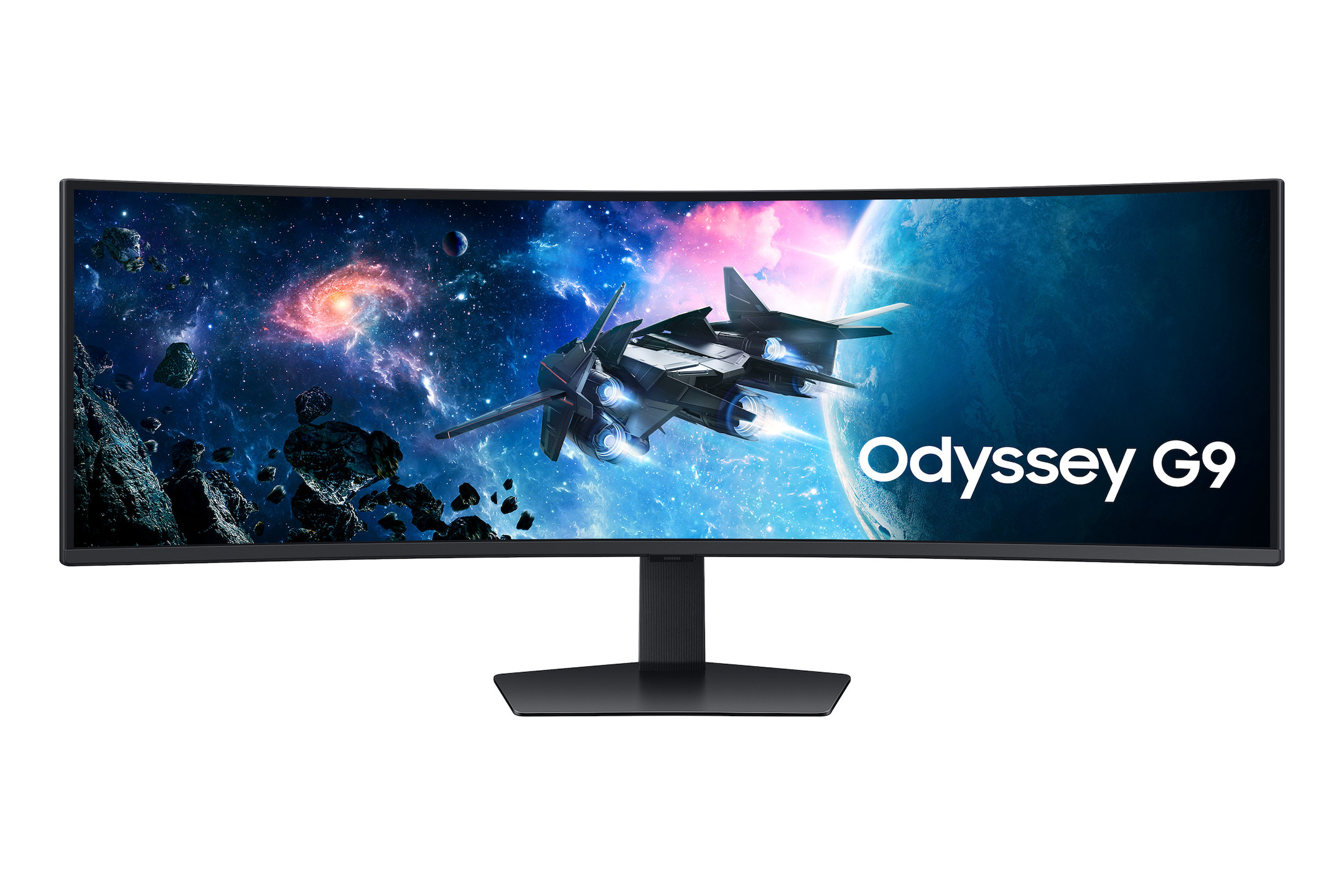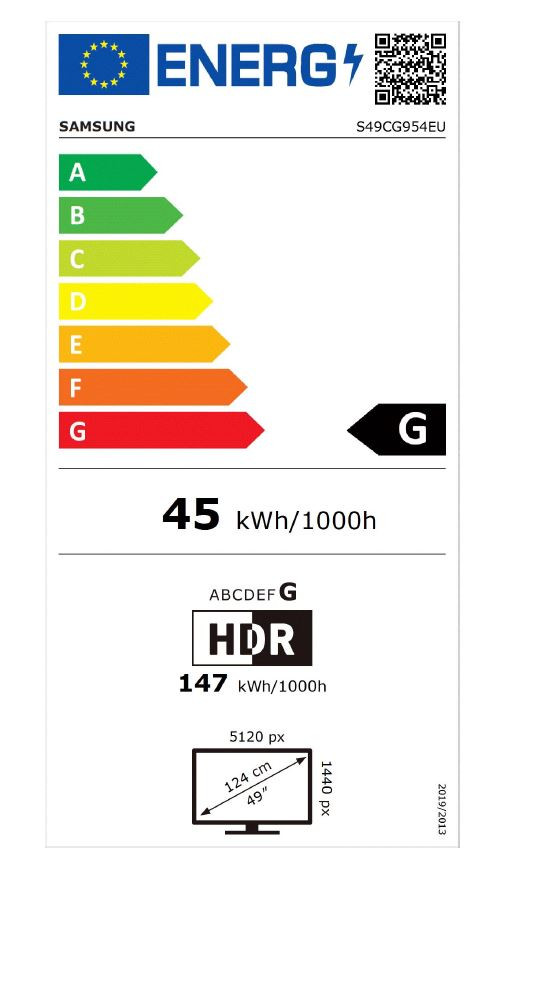







































£1,048.00*
- Resolution 5120 x 1440
- Diagonal 49"
- Panel type VA
- Refresh Rate 240Hz



Product information
Arouse your thirst for adventure
1000R Curved-Display mit Dual QHD-Auflösung

Experience breathtaking high-level gaming with even more intense game scenes: The 49-inch super ultra-wide display with dual QHD resolution completely fills your peripheral vision, allowing you to fully immerse yourself in the role of your character.
Detail your way to victory
VESA-Display HDR1000

Unfold details in all their glory: With a contrast ratio of 1,000,000:1 and 1,000 nit peak brightness, the HDR1000 VESA display ensures an adapted colour representation and depth, even in shady gaming environments. This gives you a gaming advantage by allowing you to easily spot hidden enemies even in the darkest corners.
Fast refresh rate of 240 Hz and fast response time of 1 ms
240 Hz & 1 ms (GtG)

Maximum speed in every scene: With a refresh rate of 240 Hz, you'll experience breathtaking gameplay with smooth action. Thanks to a response time of 1 ms (GtG), minimal blurring and minimised ghosting, you can defeat any opponent in a matter of seconds.
Smooth action without distractions
AMD FreeSync™ Premium Pro

Seamlessly smooth gameplay: Fast action sequences and complex game scenes look stable and smooth thanks to AMD FreeSync™ Premium Pro, so you can always stay one step ahead of your opponents.
- DWQHD resolution
- Response time 1 ms (G/G)
- Refresh rate 240 Hz
- FreeSync Premium Pro
- VESA DisplayHDR 1.000
- Core Sync
- Eye Saver Mode
- Flicker Free
Technical data
| Name | Samsung Odyssey G9 - G95C 49" Gaming Monitor - 5120 x 1440, 240Hz, 1ms |
|---|---|
| Article number | 1000030546 |
| GTIN/EAN | 8806095234915 |
| Manufacturer SKU | LS49CG954EUXEN |
| EPREL ID | 1762586 |
| Model name | G95C |
| Brand | Samsung |
| Product Type | Monitor |
| Product Series | Samsung Odyssey Series |
| Technology | LCD |
| Panel type | VA |
| backlight | Edge-LED |
| Resolution | 5120 x 1440 |
| Diagonal | 49" |
| Aspect Ratio | 32:9 |
| Viewing angle - Horizontal | 178° |
| Viewing angle - Vertical | 178° |
| Contrast Ratio | 2,500 :1 |
| Screen finish | Matt |
| Max. Brightness | 450 cd/m² |
| Response time | 1ms |
| Refresh Rate | 240Hz |
| Support - VESA | 100 x 100 |
| Inputs | 1x Displayport , 1x USB-A , 2x HDMI , 2x USB-A |
| heightadjustable foot | 120 mm |
| Features | AMD FreeSync , Curved , Flicker Free , Picture in Picture , height adjustable , pivotable , tiltable |
| Product width | 114.76 cm |
| Product height | 36.35 cm |
| Product depth | 29.38 cm |
| Weight | 10.6 kg |
| Colour | Black |
| EEK Spectrum | A to G |
| Energy efficency class | G |
| Delivery contents | DisplayPort Cable , HDMI Cable , Power cable , USB cable |
| Condition | New |
| Warranty | 24 Month |
| Warranty type | Bringin service Service and support information |
Product safety
| Person responsible for the EU |
|---|
| Samsung Electronics GmbH |
| Am Kronberger Hang 6 |
| 65824 Schwalbach |
| Germany |
| sseg.comm@samsung.com |



